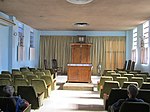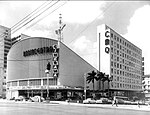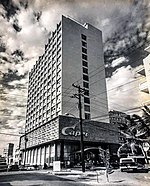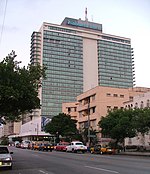Beth Shalom Temple (Havana, Cuba)
1952 establishments in Cuba20th-century architecture in CubaAshkenazi Jewish culture in North AmericaAshkenazi synagoguesConservative Judaism in North America ... and 5 more
Conservative synagoguesCuban building and structure stubsNorth American synagogue stubsSynagogues completed in 1952Synagogues in Havana

Temple Beth Shalom, built in 1952, is a synagogue located in the Vedado neighbourhood of downtown Havana. In 1981, much of the original building was sold to the state, and was then turned into the Bertolt Brecht Cultural Center, including a theatre, a music venue, a gallery and a bar. Only part of the structure remains in Jewish hands today. Extensive repairs were undertaken in the 1990s. Beth Shalom is considered the headquarters of the Cuban Jewish Community. The building also houses a Jewish library.
Excerpt from the Wikipedia article Beth Shalom Temple (Havana, Cuba) (License: CC BY-SA 3.0, Authors, Images).Beth Shalom Temple (Havana, Cuba)
Calle I,
Geographical coordinates (GPS) Address External links Nearby Places Show on map
Geographical coordinates (GPS)
| Latitude | Longitude |
|---|---|
| N 23.141634 ° | E -82.389425 ° |
Address
Templo Beth Shalom
Calle I
10428 (Rampa)
Havana, Cuba
Open on Google Maps










